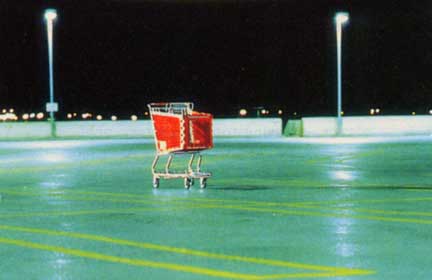
Nights After The Day After
by Jeff Boison

When I was a boy, on November 20, 1983 I had the misfortune of seeing 'The Day After: The Perils of Nuclear War' on the American Broadcasting Channel. I was 10 years old. I sat on the couch with my mother and our family dogs spent their time on the floor before us. They never remained on their sides or backs for too long, getting up every now and then to retrieve a chewed rope toy or bone from the corner by the sidetable with all of the family pictures. They would pick up said rope toy or bone and try to excite us into acting as gung ho and/or frenzied as they became whenever we waved the chewable item before their eyes and mouths. Either we fell for it or we did not. If we fell, then a short bout of throw-run-run-run-crash-chomp-run-run-run-drop at feet would commence until the human player usually gave up. Tonight, however, we paid no attention to the begging, play-starved hounds. The television had our undivided attention.
As we watched 'The Day After,' my mother held my hand at first, but later put her entire arm around me. Many of my friends were not allowed to watch 'The Day After.'
That night, I went to bed afraid. I went to bed fearing not the day, nor the after. My concerns were with the present and with the view.
After much begging and pleading, I had previously convinced my mother to allow me to place my bed alongside my bedroom window. The two major reasons why she did not want to allow such placement were:
A) She feared that I would fall out the window, roll down the roof and drop to my death and/or serious injury, and
B) She did not want one side of the bed to go flush against the wall, thereby transforming the chore of making the bed into a 'hassle' (as she liked to put it).
By arguing that I was of an age and height that made helplessly falling from a second story window rather difficult and by promising that I would gladly (and regularly) make my own bed, my request of bedside sleeping was granted.
I was now able to sleep on my right side, with my head facing south and my feet pointed north. My view looked east out over the hedges that bordered the backyard of my childhood home. Past those hedges was the fielded property of Adelphi University, which contained two baseball diamonds and a large green used primarily for soccer and/or lacrosse.
I would be sent to bed each night for many nights after I saw The Day After and find myself unable to sleep. I would look out my window and watch for the first lights streaking towards the quiet field. I would listen for the sounds of alarm or sirens and try even harder to hear the high pitched Emergency Broadcast System tone that was bound to emerge from the television set my parents watched downstairs. I would look past the field I half expected to split in two and expel a fat, red coned missile labeled 'MX'; and I would see the administration building in the distance that I had noted bore a black and yellow metal plate which designated it a safe place to turn in the event of a nuclear war (I knew that bike ride during which I made that discovery would someday save my life). I would squint and peer and climb closer to the window, my eyes tracing the desperate route I would taken when my time had come to flee. Up against the glass, I would feel the crisp November air through the recently installed storm windows that had just replaced the screened windows of spring and summertime. With the fresh chill upon my face, it took me a long time to eventually fall asleep.
I inevitably awoke sometime later before the dawn. Each and every night.

About the author:
Jeff Boison lives in Astoria.
